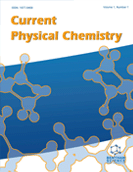Abstract
Background: Alzheimer’s disease (AD) has been characterized by a progressive loss of cognitive functions, especially memory, impacting the daily life and personality of the elderly. In the present study, we performed molecular modeling of methylxanthines and tannins, with pharmacologic actions as stimulants of the Central Nervous System (CNS) and antioxidant, respectively, present in Paullinia cupana Kunth (guarana), evaluating the theoretical viability of these molecules as an alternative for the treatment of Alzheimer's disease, specifically to act by inhibiting the β-secretase enzyme (BACE-1).
Methods: It has been accomplished optimization of selected chemical structures, derivation of the pharmacophore, docking simulation, as well as prediction of physicochemical, pharmacokinetic (ADME) and toxicological (TOX) properties, ending with the activity prediction and synthetic viability of the selected molecules. For the physicochemical properties, evaluated according to Lipinski’s Rule of Five, only methylxanthines, catechin and epicatechin remained within the parameters evaluated.
Results: In the molecular docking, caffeine, theobromine, theophylline, catechin, epicatechin, and proanthocyanidin, respectively, interacted with 57.14%, 42.86%, 28.57%, 57.14%, 28.57% e 57.14% of the active site amino acid residues of BACE-1. The ADME properties indicated the average permeability of the blood-brain barrier to the molecules caffeine, theobromine, theophylline, catechin and epicatechin, and caffeine, theobromine and theophylline showed high intestinal absorption and low aggregation to plasma proteins. The TOX properties showed only proanthocyanidin as a safer molecule. Only catechin and epicatechin were related to the action of BACE-1 in predicting activity. The synthetic viability of methylxanthine has been evaluated as high, while catechin and epicatechin were median and proanthocyanidin has been evaluated as difficult.
Conclusion: Catechin and epicatechin tannins presented more favorable results indicating the interaction of suppression of the Aβ aggregation, potential BACE-1 inhibitors.
Keywords: Alzheimer's disease, Paullinia cupana, Molecular Docking, BACE-1
Graphical Abstract
[http://dx.doi.org/10.1590/S0100-40422003000300002]
[http://dx.doi.org/10.5897/JMPR2013.5067]
[PMID: 28176625]
[http://dx.doi.org/10.1590/S1516-89132005000600007]
[http://dx.doi.org/10.1093/nar/gkn187] [PMID: 18424800]
[http://dx.doi.org/10.1016/S0169-409X(00)00129-0] [PMID: 11259830]
[http://dx.doi.org/10.1002/prot.340080302] [PMID: 2281083]
[http://dx.doi.org/10.2133/dmpk.19.327] [PMID: 15548844]
[http://dx.doi.org/10.1007/s10822-006-9099-2] [PMID: 17294248]
[http://dx.doi.org/10.9734/BJPR/2015/18013]
[http://dx.doi.org/10.1002/prot.20497] [PMID: 15937897]
[http://dx.doi.org/10.3390/molecules18055706] [PMID: 23681056]
[http://dx.doi.org/10.1107/S0907444911047251] [PMID: 22194329]
[http://dx.doi.org/10.1073/pnas.69.11.3128] [PMID: 4564203]
[http://dx.doi.org/10.4149/BLL_2015_106] [PMID: 26435014]
[http://dx.doi.org/10.1016/j.neuroscience.2006.07.021] [PMID: 16938404]
[http://dx.doi.org/10.3233/JAD-2009-1071] [PMID: 19581723]
[http://dx.doi.org/10.1039/C5FO00052A] [PMID: 25756794]
[http://dx.doi.org/10.21800/S0009-67252011000100013]















